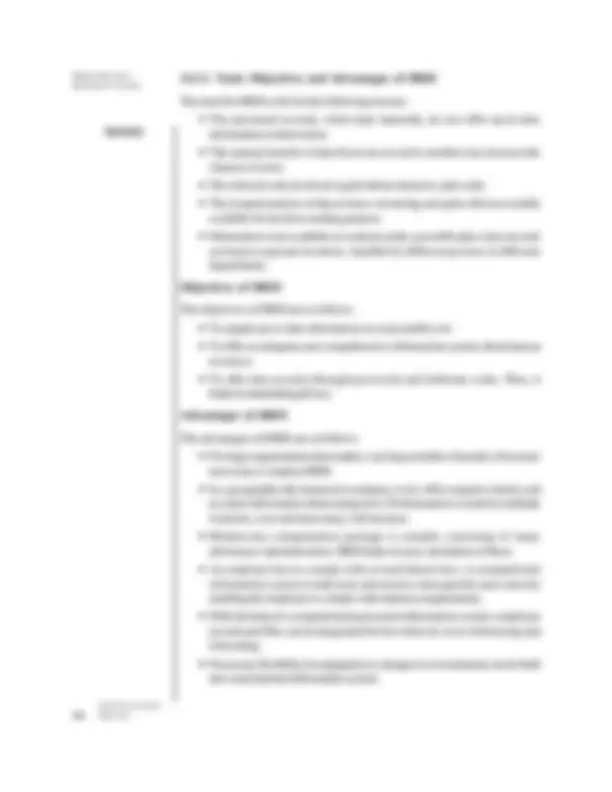



Study with the several resources on Docsity

Earn points by helping other students or get them with a premium plan


Prepare for your exams
Study with the several resources on Docsity

Earn points to download
Earn points by helping other students or get them with a premium plan
Community
Ask the community for help and clear up your study doubts
Discover the best universities in your country according to Docsity users
Free resources
Download our free guides on studying techniques, anxiety management strategies, and thesis advice from Docsity tutors
Human Resource Management (HRM) is a strategic and comprehensive approach to managing people within an organisation. It involves recruiting, hiring, training, evaluating, and rewarding employees to maximise their performance and align with the organisation’s goals. HRM also ensures compliance with labour laws, fosters a positive workplace culture, and supports employee development and well-being. By managing workforce planning, performance, compensation, and employee relations, HRM plays a vital role in organisational success. In today’s dynamic business environment, HRM is increasingly data-driven and aligned with long-term strategic planning, making it an essential function in both large corporations and small enterprises.
Typology: Lecture notes
1 / 2

This page cannot be seen from the preview
Don't miss anything!


Human Resource Information System
Self-Instructional Material 167
Compensation function o Costs of employees in terms of turnover o Connection between productivity and wages o Effect of money on work motivation Maintenance function o Causes and costs of employee separation o Absenteeism, turnover and other indicators of organizational health o Incentives needed for voluntary separation (VRS), if necessary Integration function o Causes of change in productivity level o Cost of adoption to environmental changes o Impact of changes in technology and markets
Computerized HRIS
A computerized HRIS is an information system that makes use of computers to monitor, control and influence the movement of human beings from the time they indicate their intention to join an organization till the time they leave the organization. According to S. Chandrashekar, it consists of the following subsystems:
Recruitment information: It includes advertisement module, applicant’s profile, appointment and placement data. Personnel administration information: It consists of personnel needs of an employee concerning leaves, transfer, promotion, increment, etc. Manpower planning information: It offers data that could help human resource mobilization, career planning, succession planning and inputs for skill development. Training information: It provides information for designing course material, arranging need-based training and appraising the training programme, etc. Health information: It consists of data related to health, welfare and safety of employees. Payroll information: It provides data regarding wages, salaries, incentives, allowances, fringe benefits, deductions for provident fund, etc. Personnel research information: It is a bank of historic and current data about employee attitude, turnover, absenteeism , which may be used for different types of analyses
Human Resource Information System
Self-Instructional 168 Material
14.2.1 Need, Objectives and Advantages of HRIS
The need for HRIS is felt for the following reasons: The personnel records, when kept manually, do not offer up-to-date information at short notice. The manual transfer of data from one record to another may increase the chances of error. The clerical work involved is quite labour intensive and costly. The manual analysis of data is time-consuming and quite often not readily available for decision-making purpose. Information is not available at a central, easily accessible place since records are kept at separate locations, handled by different persons in different departments. Objectives of HRIS The objectives of HRIS are as follows: To supply up-to-date information at a reasonable cost To offer an adequate and comprehensive information system about human resources To offer data security through passwords and elaborate codes. Thus, it helps in maintaining privacy Advantages of HRIS
The advantages of HRIS are as follows: For large organizations that employ very large number of people, it becomes necessary to employ HRIS. In a geographically dispersed company, every office requires timely and accurate information about manpower. If information is stored in multiple locations, costs and inaccuracy will increase. Modern-day compensation package is complex consisting of many allowances and deductions. HRIS helps in easy calculation of these. An employer has to comply with several labour laws. A computerized information system would store and retrieve data quickly and correctly enabling the employer to comply with statutory requirements. With the help of a computerized personnel information system, employee records and files can be integrated for fast retrieval, cross-referencing and forecasting. Necessary flexibility for adaptation to changes in environment can be built into a mechanized information system.